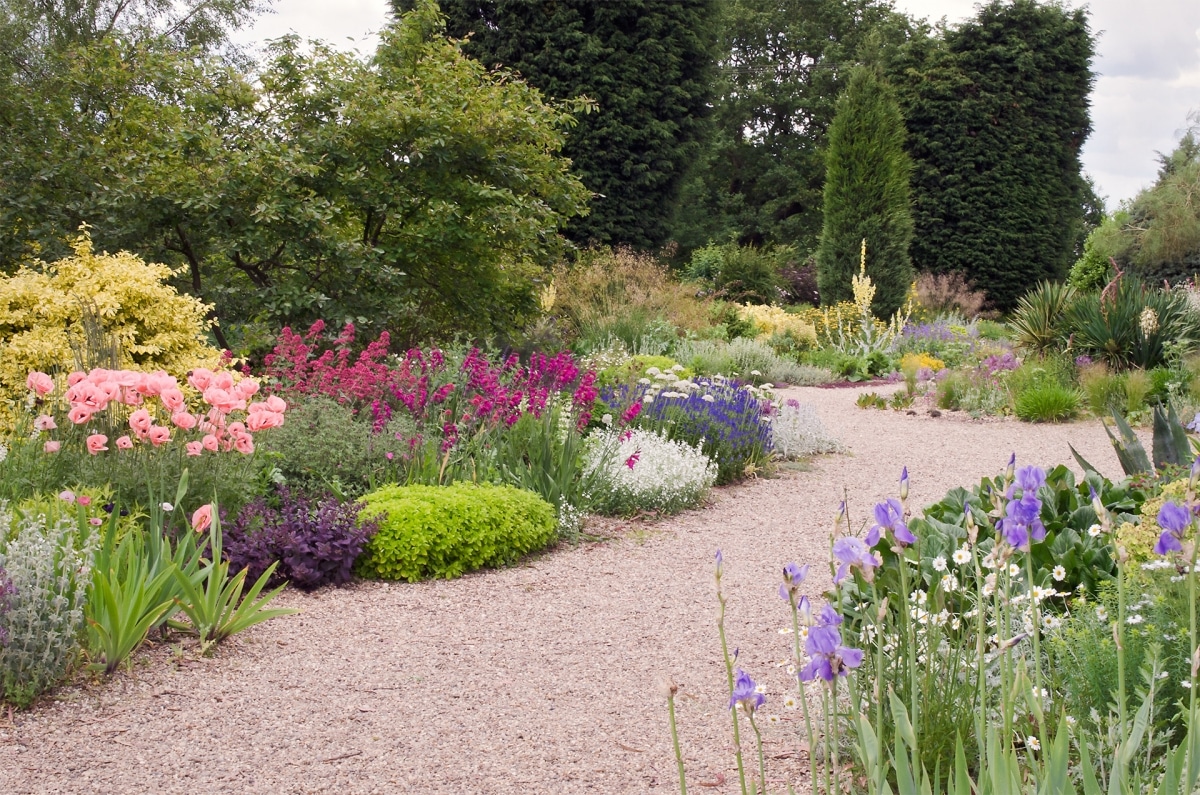
Image - Flickr / ukgardenphotos
There are a wide variety of plants that support a lot of sun, but there are some that only withstand it as adults. That is why when we do not have shade on our terrace, patio or garden, we have to look for those that can be directly exposed to the sun from when they are young; or, failing that, those that do not take long to adapt.
For this reason, we are going to show you a selection of species that, based on experience and knowledge, they not only grow well in sunny places, but also, If they have been in semi-shade, they can quickly get used to receiving direct sunlight.
Selection of plants that withstand the sun
Here you have a mix of plant species that you can have in a sunny place. Any of them will feel very comfortable in a place exposed to the star king:
Agave
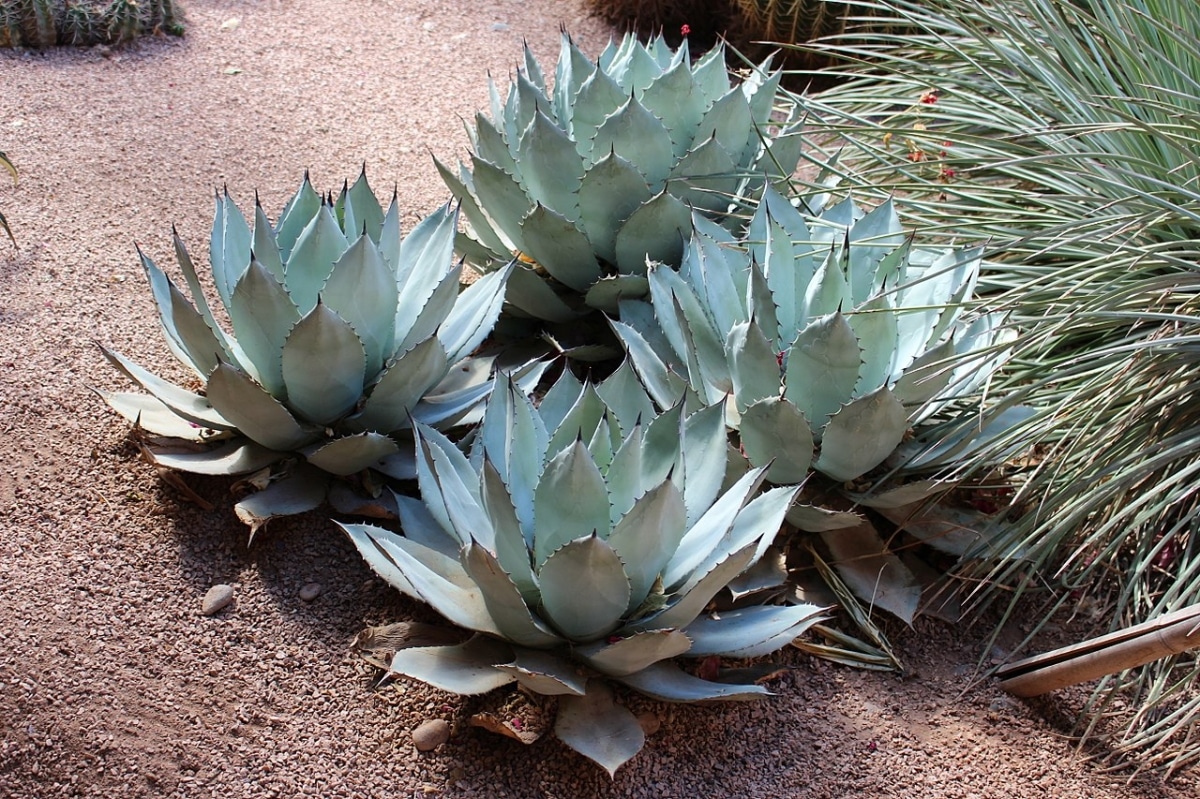
Image - Wikimedia / Emőke Dénes
The agaves they are plants that develop rosette-shaped leaves, green in color and ending in sharp points. The margins are usually spiny, except in some species such as the Agave attenuata. The height varies from one to another, but in general they grow up to 40 centimeters. Of course, they only bloom once, producing a 2 meter high flower stalk; later, they die leaving the suckers and seeds.
Bamboo

Image - Wikimedia / kallerna
The bamboos They are rhizomatous plants that usually have very tall cane-shaped stems, more than 20 meters high; although there are species that have them much shorter, such as the Pseudosa japonica (5 meters), and some can even be considered dwarfs, such as the Pleioblastus pumilus (between 0,30 and one meter in height). These are plants that, although they tolerate semi-shade, have a better development if they are grown in full sun from day one.
Date

Image - Wikimedia / Naman Gupta
La date It is a palm tree typical of arid and semi-arid regions, where it lives exposed to the sun. As usual, we are talking about a plant with several thin trunks, which measure a height of 12 meters. But sometimes it will only have one, either because genetically it does not have to produce it, or because it is in an area where the gardener is removing its young. If we talk about its leaves, these are pinnate, bluish-green, and long. Its dates ripen in summer.
Lavender
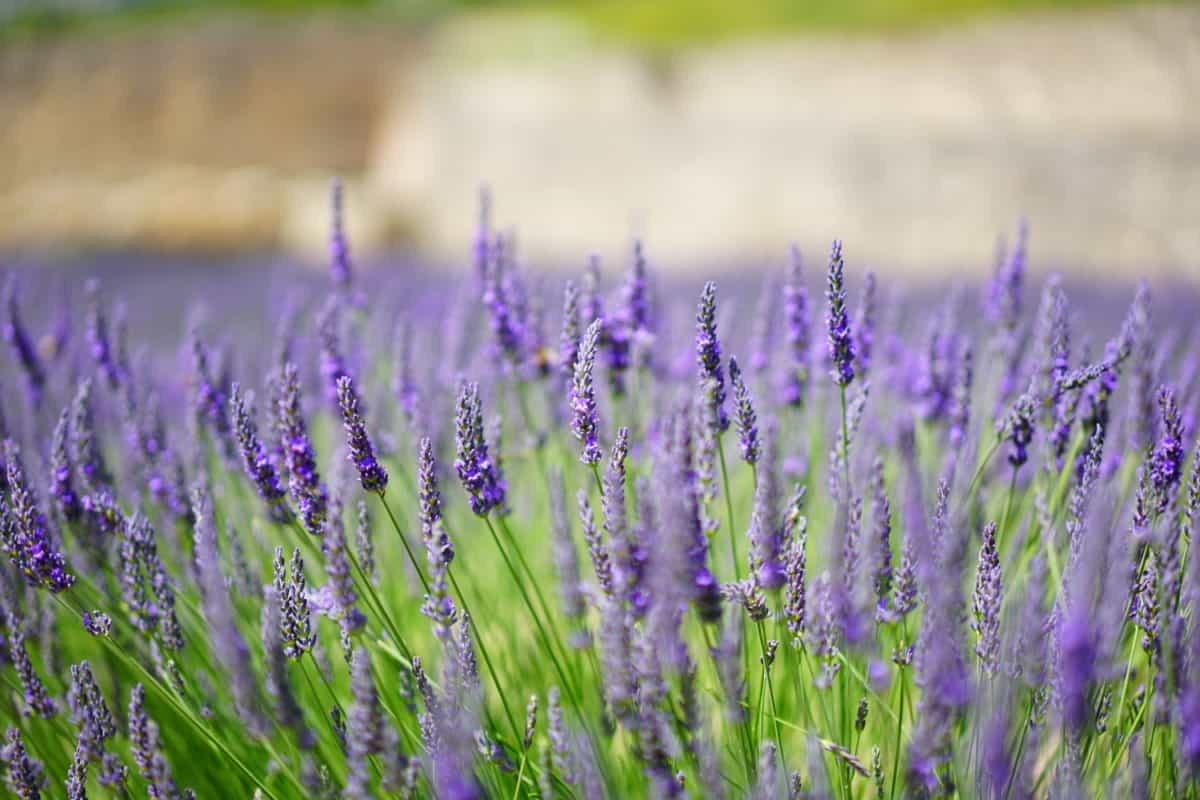
La lavender essence it is a sun plant that grows as a sub-shrub or, as we say in popular Castilian »mata». It reaches a height of up to 1 meter, and produces flowers in purple inflorescences. All of it gives off a very pleasant aroma, but this smell repels some very annoying insects that are mosquitoes. For this reason, its cultivation in gardens in warm, sunny regions is interesting. Also, you have to know that it survives with little water.
Olive

Image - Wikimedia / Burkhard Mücke
El olive it is an evergreen tree that reaches a height of 15 meters. With the passage of time its trunk thickens and twists. It is a fruit tree that is grown for its olives, but also for being one of the ones that needs the least cold hours to produce fruit. In addition, it is ideal for dry gardens since it does not need a lot of water to continue.
Rosebush

El rosebush It is a shrub, usually deciduous, which blooms from spring to late summer or fall depending on the weather. There are many varieties: some have red flowers, others yellow, others white, others pink... Some even have a scent. But all of them are plants that withstand a lot of sun.
Yucca

Image - Flickr / James St. John
Plants of the genus Yucca they are succulent evergreen shrubs that may or may not develop a more or less tall trunk, of about 5 meters maximum, from which sprout rose-shaped leaves with pointed ends, usually green in color but there are also variegated forms (green with yellow margins). In addition to withstanding the sun, they resist drought very well, which is why they are widely used as dry garden plants.
Plants for terrace with lots of sun
Now, we are going to tell you five plants that you can grow in pots, on a terrace exposed to direct sunlight. These, unlike many that we have seen so far, are smaller, so their growth is easier to control:
Aeonium
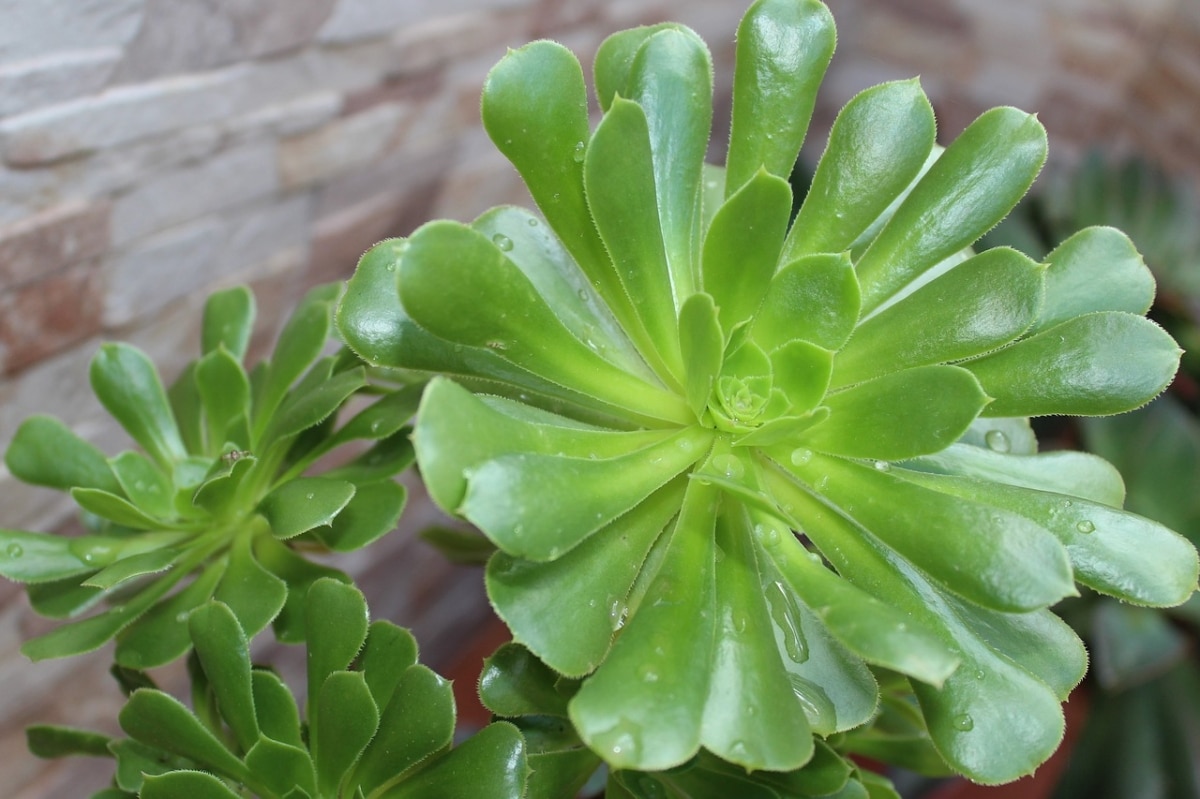
The Aeonium They are succulent plants, or non-cactus succulents, that live very well in full sun as long as they have been acclimatized beforehand (or that they have germinated exposed to the sun). There are about seventy different varieties, and that's not counting hybrids and cultivars. All of them form a rosette of leaves which usually sprout from a more or less short stem. These leaves are green, brown, bi or tricolor. They resist drought and occasional frosts of up to -2ºC, although the Aeonium arboreum and Aeonium haworthii they can withstand something more, up to -4ºC without suffering damage.
Cove (Zantedeschia ethiopica)

Calla is a perennial rhizomatous plant that reaches a height of about 30-100 centimeters. It blooms during the spring, producing white or Other colors (yellow, orange, red, pink). Although it can be in partial shade, it grows best in the sun. Yes indeed, frost destroys its leaves, but the rhizome holds up to -12ºC.
Phormio (Phormium tenax)

Image - Wikimedia / David J. Stang
El formium or New Zealand flax, is a perennial plant that reaches a height of up to 3 meters. Its leaves are sword-shaped and leathery, green, red or variegated.. These can reach up to 2 meters in length. It blooms in summer, producing a spike of reddish-orange flowers which emerges from the center of the plant. It needs a lot of sun and heat, although it resists down to -5ºC.
Hibiscus (Hibiscus)
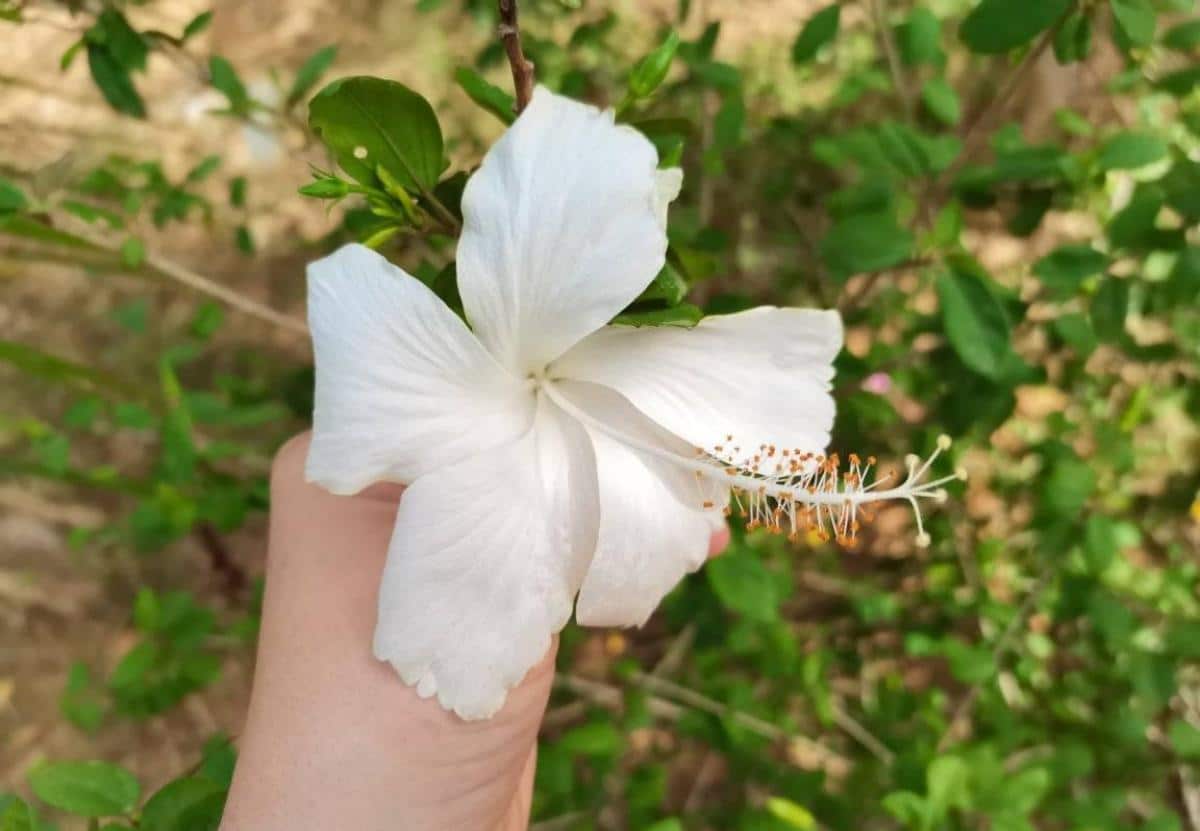
Copy of my collection.
Shrubs and small trees of the genus Hibiscus They are very pretty plants, reaching a height of between 1 and 5 meters. They produce generally large flowers, about 5-7 centimeters in diameter, and of very bright colors (white, yellow, orange, red, lilac). All of them need direct sun, although if you live in an area with frost we recommend buying the Syrian pink hibiscus (hibiscus syriacus), which grows up to 4 meters and resists down to -10ºC (the Chinese rose, Hibiscus rosa-sinensis, it only withstands weak and punctual frosts of up to -2ºC).
Star jasmine (Trachelospermum jasminoides)
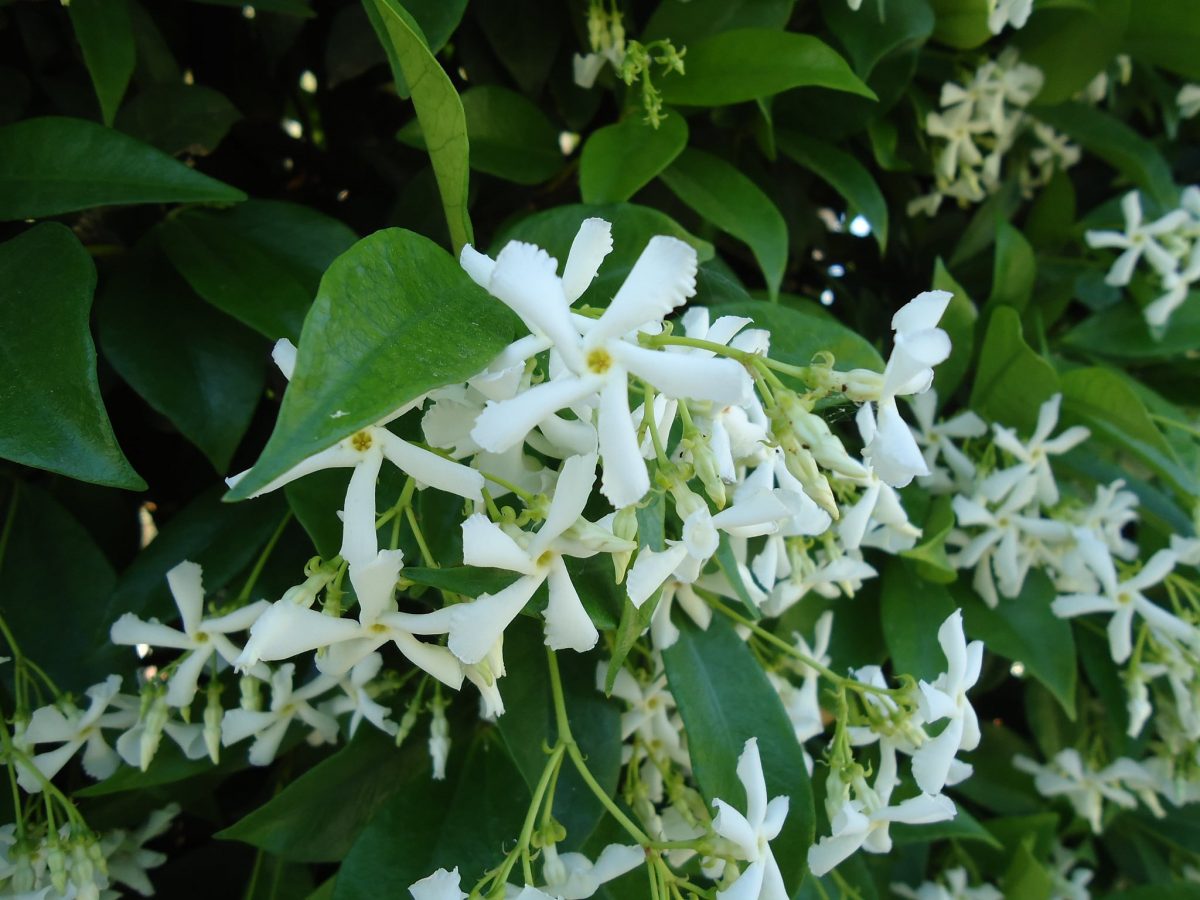
Image - Flickr / Cyril Nelson
El star jasmine or false jasmine is an evergreen climber that reaches a height of 10 meters. It has dark green leaves, and produces white flowers with five petals very similar to those of true jasmine (Jasmine). But unlike this one, it is much more resistant to cold and frost: it holds up to -8ºC.
Dwarf palm (Phoenix roubleni)

Image - Wikimedia / David J. Stang
La dwarf palm It is one of the few species of palm trees that can be in pots, although it is important that it is planted in a larger one as it grows. It reaches a height of 2-3 meters, and has pinnate leaves up to 1-1,5 meters in length.. Its trunk remains thin throughout life, as it measures 20 centimeters thick at most. It resists up to -3ºC.
Sarracenia
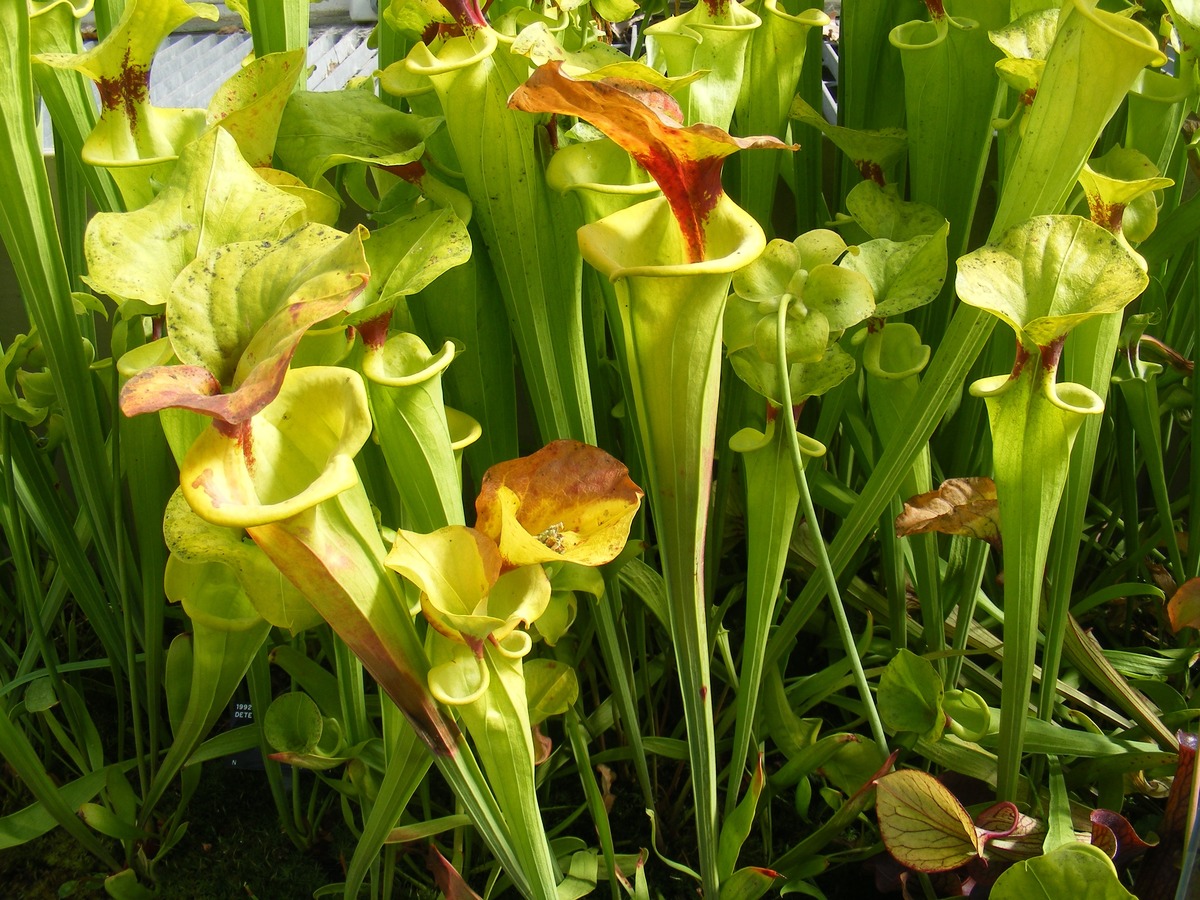
All the Sarracenia they are sun-loving carnivorous plants. In fact, they are one of the ones that need it the most. They have tube-shaped leaves filled with water, and they attract their prey by producing nectar on top of each one.. These traps are also very beautiful, because depending on the variety they can be green, reddish, green-yellowish, or multicolored (for example, half green and half white with reddish or purple nerves. Of course, they cannot be grown in floor Click on the link for more information.
Flowers that hold the sun
If what interests you are flowers, let's see some of those that have to be grown in sunny places so that they can grow and bloom correctly:
Carnation (Dianthus caryophyllus)
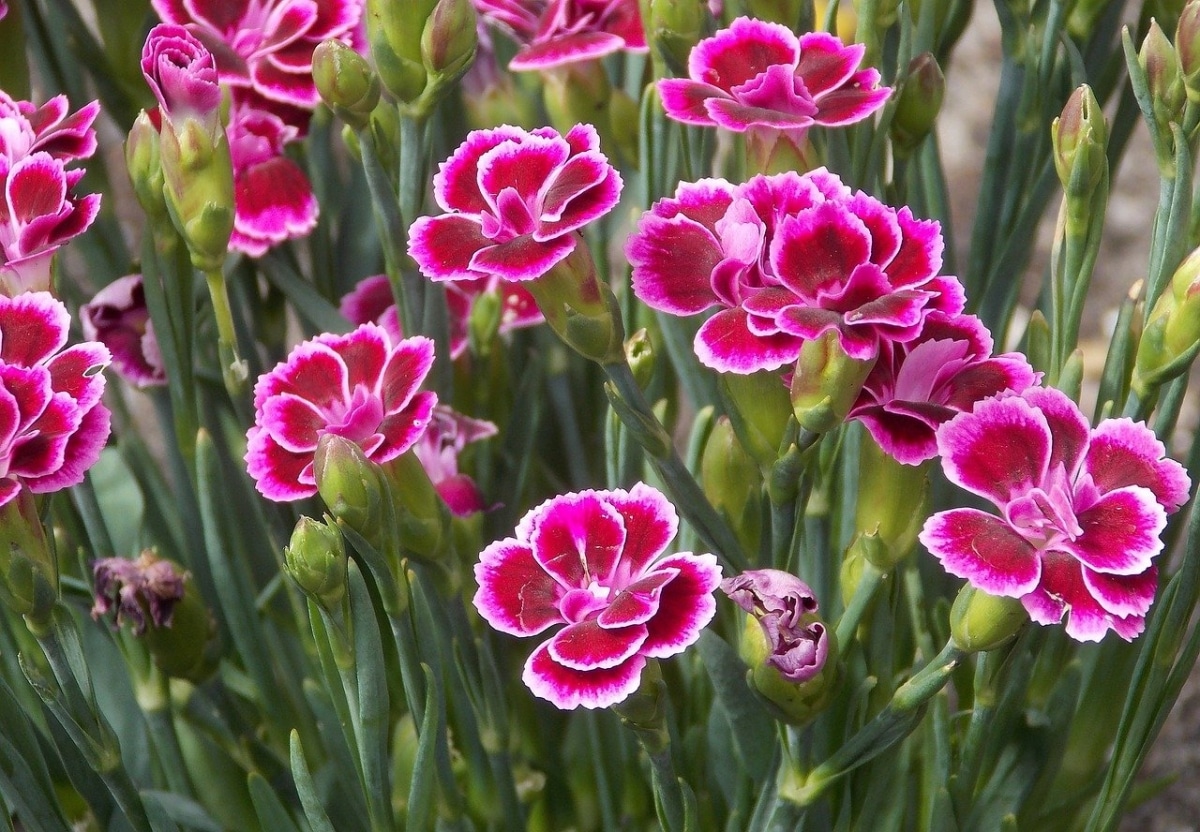
El clavel or carnation is a perennial or lively herb that is about 30 centimeters high, but can reach one meter. It produces flowers in panicles of very striking colors, such as red, pink or yellow in spring-summer. But for this you need to be directly exposed to the star king, otherwise it will not flourish.
Dimorphotheca (Dimorphotheca and Osteospermum)

The plants known as dimorphic libraries they reach a height of about 30 centimeters, but can measure up to 1 meter in width since they are upholstery. Its stems extend in all directions, forming a small green carpet with small white, orange, pink or lilac flowers that bloom in spring and summer. Of course, they do not resist trampling, but they are interesting for a rockery or large planter, of those that measure about 80 centimeters or more in length. They tolerate frost down to -3ºC.
Gazania (Gazania freezes)
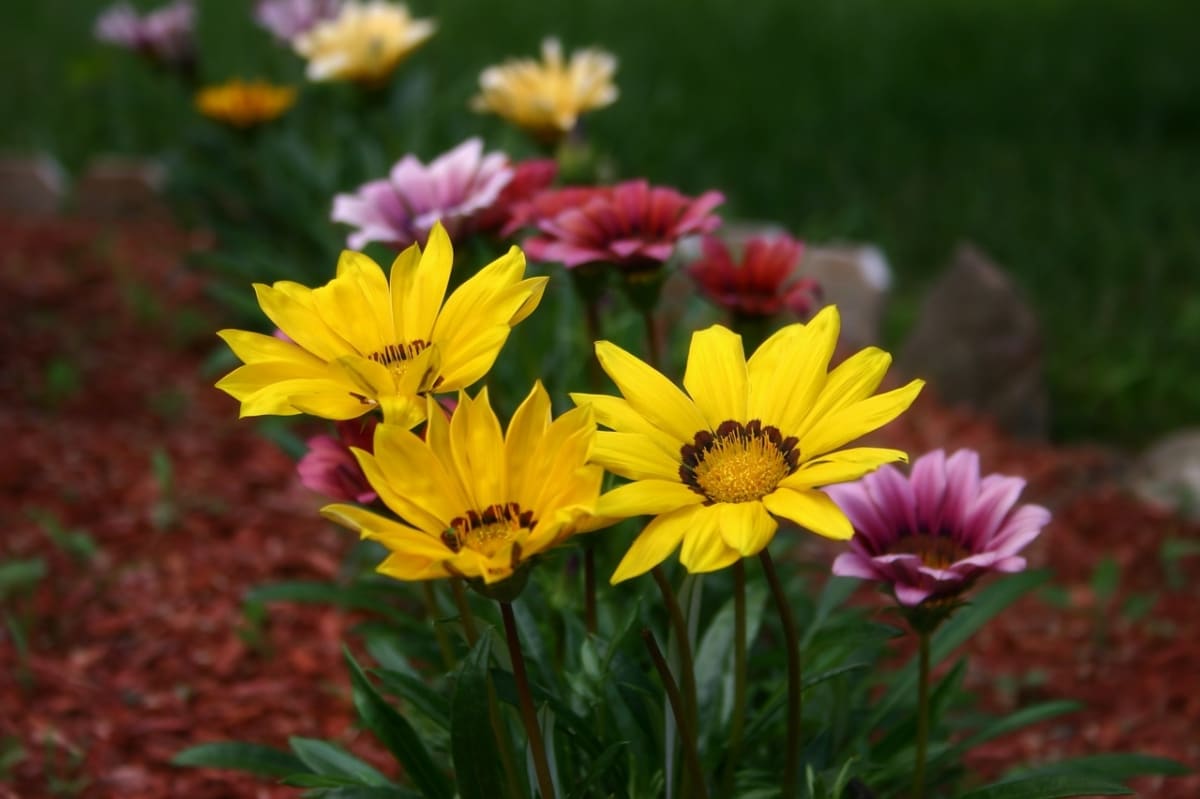
La gazania It is a small herbaceous plant that reaches a height of about 20 centimeters. It has leaves with a dark green upper side and a whitish underside, and from spring to summer it produces flowers of about 3 centimeters in diameter that are reminiscent of those of daisies. These are yellow, white, orange or red, and they have the peculiarity that they open only on sunny days, and close at sunset. Therefore, we should never put it in the shade, otherwise it would not bloom. It resists up to -4ºC.
Geranium (Geranium and Pelargonium)
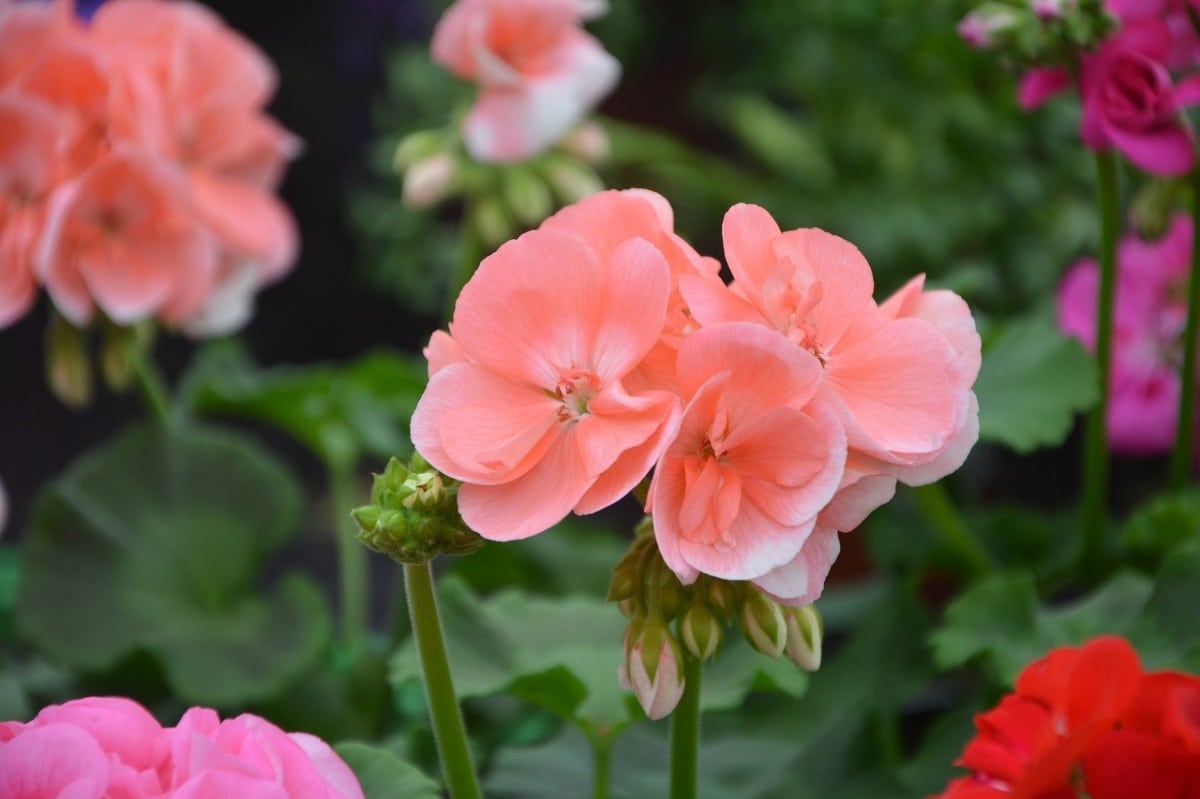
The geraniums y pelargoniums They are widely cultivated plants for their flowers. They reach an approximate height of between 30 and 50 centimeters, and bloom in spring, summer and sometimes in autumn if the weather is warm. They are ideal to have in pots, although they are also grown in gardens. Yes indeed, it is very important to carry out preventive treatments against the geranium borer at least from spring to autumn, but if you live in an area where the climate is warm, you should also do it in winter, since otherwise we would run out of plants. You can use an insecticide like this, and pulverize the entire plant and the earth. They do not resist strong frosts, only weak and punctual ones of up to -2ºC.
Sunflower (Helianthus)
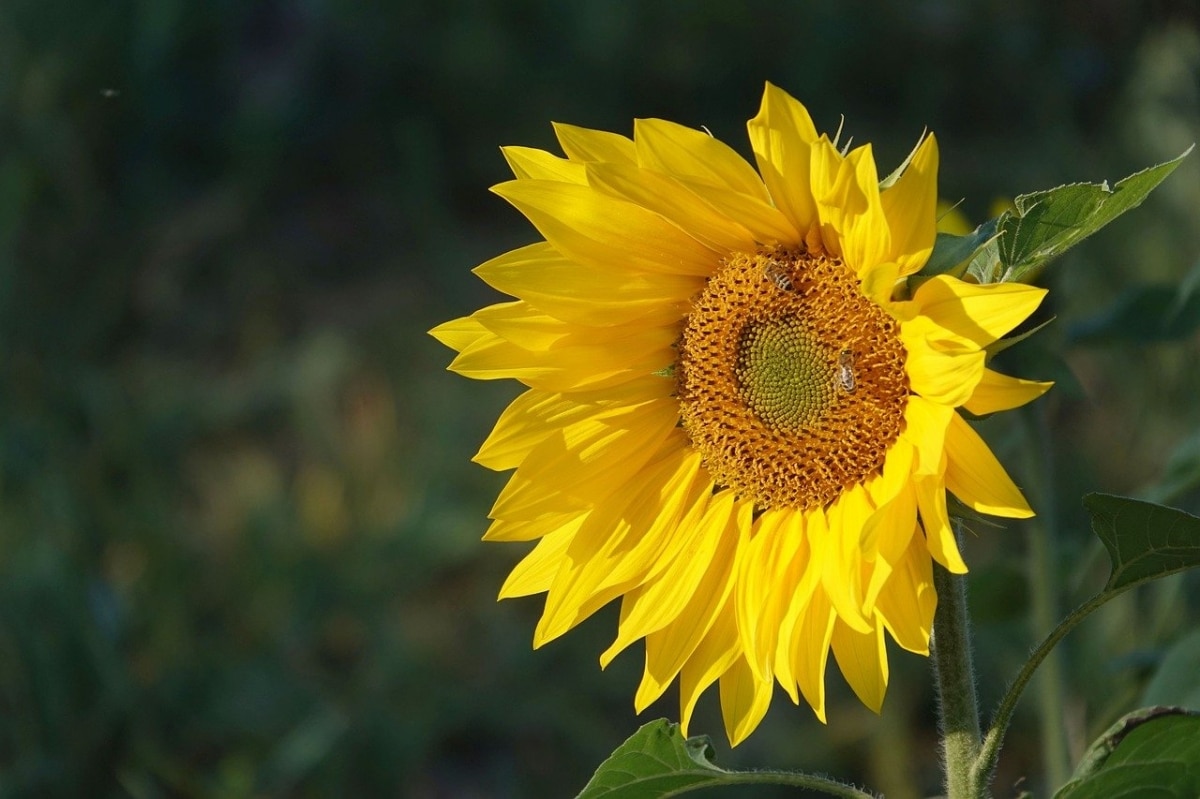
If there is a sun-loving plant, that is the sunflower. It is a grass that germinates in spring and withers in early autumn, and that produces yellow, or rarely red flowers. It can measure up to 1 meter in height, and it is very interesting because it produces edible fruits: pipes, which are a delicious snack.
Would you like to know how seeds are sown? Watch this video to find out exactly how it's done:
Primula

All the primroses, also known as primroses, are perennial plants that reach 40 centimeters in height, and that bloom very early in winter or early spring. Its flowers are grouped in inflorescences, and can be of different colors: white, yellow, pink, lilac. They really like direct sun, without which they could not have a normal development. It resists up to -1ºC without being damaged. In cooler climates it is grown as an annual, since it begins to flower and produce seeds already during its first year of life.
Vervain (hybrid verbena)

La verbena It is a perennial herb that is usually grown as an annual due to its low resistance to cold. There are two types: one with upright bearing that reaches 50 centimeters, and another with prostrate bearing that grows over 20-30 centimeters in height.. It blooms in summer, and produces white, red, pink, blue or yellow flowers. It supports weak frosts of up to -3ºC.
Do you know other plants that support a lot of sun?
The information that is given to nature lovers and very particular in gardening is very interesting, many times they take wrong actions, and that is why a good result is not obtained in the cultivation of ornamental plants. Thank you for the information.
Thank you for your words, Nima Julia 🙂